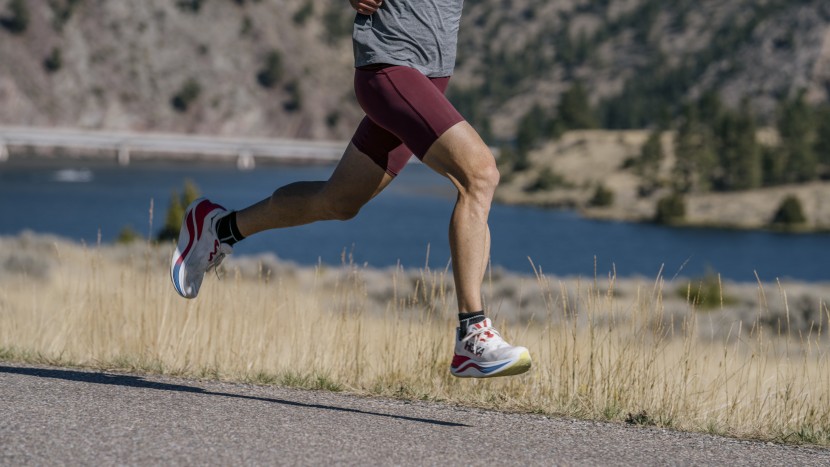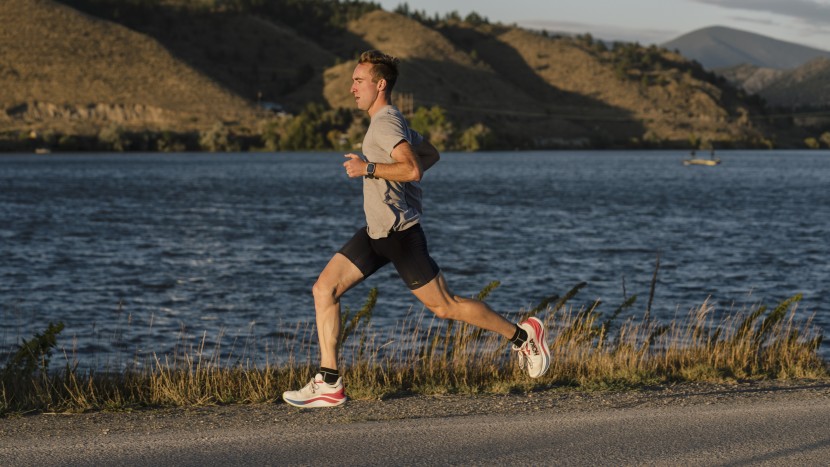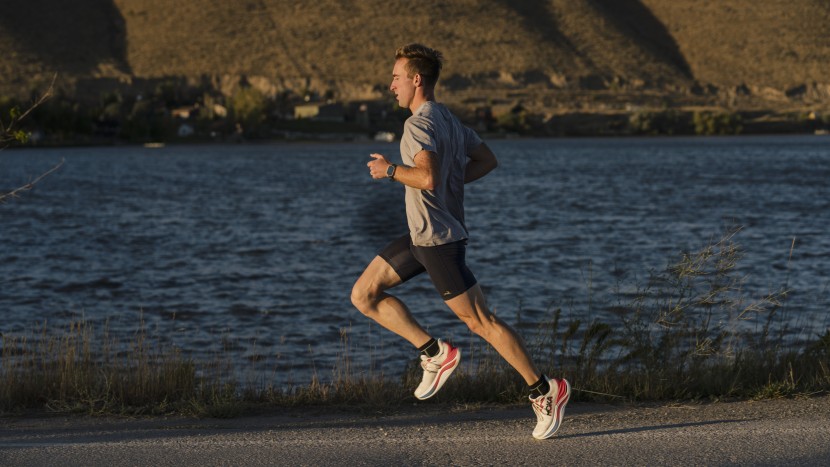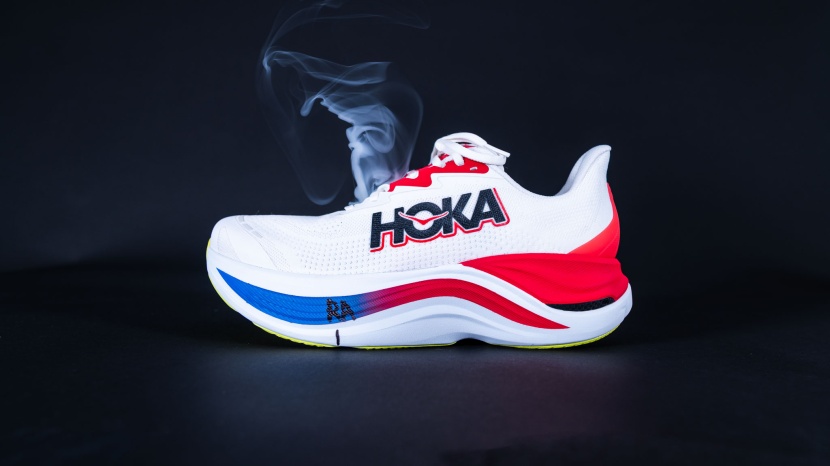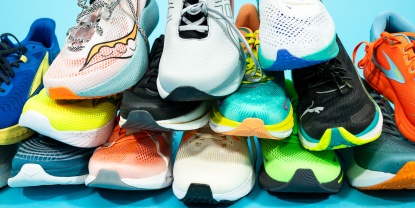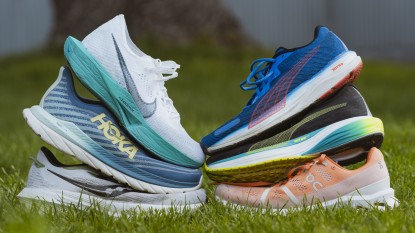Our Verdict
Compare to Similar Products
 This Product
Hoka Skyward X | |||||
|---|---|---|---|---|---|
| Awards | Best Overall | Best for Uptempo Training | Best Shoes Under $100 | ||
| Price | $225.00 at REI Compare at 2 sellers | $140.00 at REI Compare at 2 sellers | $161.50 at Amazon Compare at 2 sellers | $135 List $134.95 at Amazon | $120 List $59.09 at Amazon |
Overall Score  |
|||||
| Star Rating | |||||
| Bottom Line | The most cushioned and most comfortable shoe we’ve ever tested | A versatile and comfortable option we think most runners will love | An all-around standout that can handle easy days as comfortably as hard workouts | A daily trainer that blends comfort and versatility at a reasonable price | Plush cushioning and a bit of pace in a budget shoe |
| Rating Categories | Hoka Skyward X | Asics Novablast 5 | Saucony Endorphin S... | Puma Velocity Nitro 3 | New Balance FuelCel... |
| Landing Comfort (30%) | |||||
| Responsiveness (20%) | |||||
| Stability (15%) | |||||
| Upper Comfort (15%) | |||||
| Weight (15%) | |||||
| Traction (5.0%) | |||||
| Specifications | Hoka Skyward X | Asics Novablast 5 | Saucony Endorphin S... | Puma Velocity Nitro 3 | New Balance FuelCel... |
| Sizes Available | 7-15 US, regular | 6-15 US, regular & wide | 7-15 US, regular | 7 - 14 US, regular | 7-18 US, regular & wide |
| Style | Max-Cushion | Daily Trainer | Daily Trainer | Daily Trainer | Daily Trainer |
| Measured Heel Stack Height | 50 mm | 41 mm | 38 mm | 38 mm | 38 mm |
| Measured Heel-to-Toe Drop | 8 mm | 5 mm | 11 mm | 11 mm | 7 mm |
| Plate Type | 2-piece carbon | None | Nylon | None | Full-length plastic |
| Rocker Angle | 21.0 deg | 25.0 deg | 25.0 deg | 18.0 deg | 19.0 deg |
| Rocker Apex Location | 64.5% | 56.0% | 67.7% | 66.7% | 68.3% |
| Measured Weight | 12.00 oz | 9.50 oz | 9.03 oz | 10.07 oz | 10.52 oz |
| Upper | Engineered knit | Engineered jacquard mesh | Engineered mesh/knit | Engineered knit | Engineered mesh |
| Midsole | Peba, Supercritical EVA | FF Blast Max | PWRRUN PB | Profoam | FuelCell |
| Outsole | Rubber | AHAR LO | Rubber | PumaGrip | Rubber |
| Heel Tab Type | Extended heel pull | Finger loop | None | None | None |
Our Analysis and Test Results
Bringing race technology to an easy day shoe seems counter-intuitive, yet that's exactly what Hoka did with the Skyward X. The combination of PEBA and supercritical EVA foams creates a soft and bouncy ride, and the carbon plate here provides stability rather than purely stiffness. It results in an exceptionally unique shoe.
Landing Comfort
We've already mentioned the PEBA and supercritical EVA that sandwich the carbon plate. The PEBA foam is closest to your foot and provides a bottomless compression underfoot, with good energy return. We measured 50 mm of foam underfoot at the heel, with an 8 mm drop using the World Athletics standard stack height measurement, making this one of the thickest shoes we've ever tested.
You definitely notice the total volume of foam underfoot. Wearing the Skyward feels a bit like wearing a pair of stilts; you get an extra 2 inches of height while wearing them. All that foam means that your legs are extremely insulated from the ground. Even on uneven, rocky surfaces, there isn't even a hint of ground feel. For some runners, that's not an issue. For others, that can seem a bit disconcerting. We fall in the first group, and the Skyward takes home top marks for cushioning and landing comfort as a result.
Landings are smooth and bottomless, with more resilience than we expect in a shoe this soft. We very much enjoy easy recovery miles in this shoe thanks to the extremely plush feeling. While we think some runners may love its comfort for long runs, we prefer a slightly lower and lighter shoe for our longest efforts.
Responsiveness
The Skyward X is more responsive than most shoes that are optimized for comfort. That's a huge plus. It feels best on recovery runs, but it can handle normal mileage as well. The Skyward has a noticeable rocker that helps keep things smooth and turning over well at those relaxed paces. Once you start pushing at a moderate pace, though, things start to get less enjoyable quickly. That's not a fault of the foam or geometry but rather the overall bulk of the shoe.
Yes, it can turn it over. No, you won't want to do workouts or races in this shoe (unless you're into running with ankle weights). If you saw the words “carbon plate” earlier and thought this shoe would be a race day option, you're in for disappointment. If you're looking for a fast and well-cushioned option, there are lots of better options out there. This shoe is optimized to eat up lots of easy mileage.
Stability
The overall stability of the Skyward X surprised us. It's no stability shoe, but it's remarkably planted for a toe that is this bouncy and tall. Through the heel and midfoot, the shoe has significant sidewalls that help provide support and direction. We found the carbon plate helps give the shoe some direction when running, helping it track well rather than feel like it's bouncing you off your intended path.
On the other hand, this shoe leans heavily towards instability when you start to go faster. We actually struggled to control it when decelerating during strides, and it feels awkward when running on a track. That likely has to do with the overall mass of the shoe paired with the higher energy-return foam.
Upper Comfort
The Skyward X has a standard but comfortable upper. It's a little firmer than we're used to, which is a plus on this shoe. The extra rigidity does aid in controlling the bulk of the shoe. As with most recent Hoka offerings, we found the shoe to run narrow through the midfoot and to have an excessive and premature taper of the toe box. While we didn't experience any issues with it, runners who prefer some space likely will feel constricted in this trainer. Overall, the upper accomplishes what it sets out to do. It's comfortable and supportive, in keeping with the rest of the shoe.
Weight
The Skyward X is portly, to say the least. Our US men's size 10.5 tipped the scales at a whopping 12.00 ounces per shoe. Honestly, that's too much weight. It's doable for easy mileage, but simply losing two ounces from the shoe would make it so much more versatile.
Traction
We found the traction of the Skyward X to be mediocre. The outsole gripped well on pavement, including wet and cold roads. That's a big win. On the other hand, it didn't do well on crushed gravel bike paths or dirt roads. That's likely attributed to the lack of lugs on the outsole. One thing we've noticed over the past year is that as shoes increase in stiffness, we tend to notice their lack of lugs more on loose surfaces. The Skyward is an excellent example of this.
Should You Buy the Hoka Skyward X?
If you value extreme comfort above all else and love a cushioned ride, then yes, the Skyward X is for you. On the other hand, it's an expensive shoe with a very limited use case. It's great for easy mileage and not much else. For the same cost, you can get a shoe that is almost as comfortable but more versatile. If you shop sales, you could find both a great cushioned daily trainer and a speed trainer for the same price. We don't recommend shoes like this to beginners; the high stack and longitudinal stiffness make it better suited to runners who aren't still making large changes in their movement patterns. These shoes are niche and ideal for serious runners who want to prioritize comfort on recovery days, regardless of the cost.
What Other Running Shoes Should You Consider?
The Skyward X is in a league of its own when it comes to cushioning, but the Saucony Triumph 22 is no slouch. It also uses a PEBA midsole to provide plush comfort for easy mileage, better traction, and a more comfortable upper for a significantly lower price. If the price of the Skyward doesn't bother you, but you want a more versatile daily trainer that is still incredibly comfortable, the Mizuno Neo Vista is almost perfectly suited to your needs.







